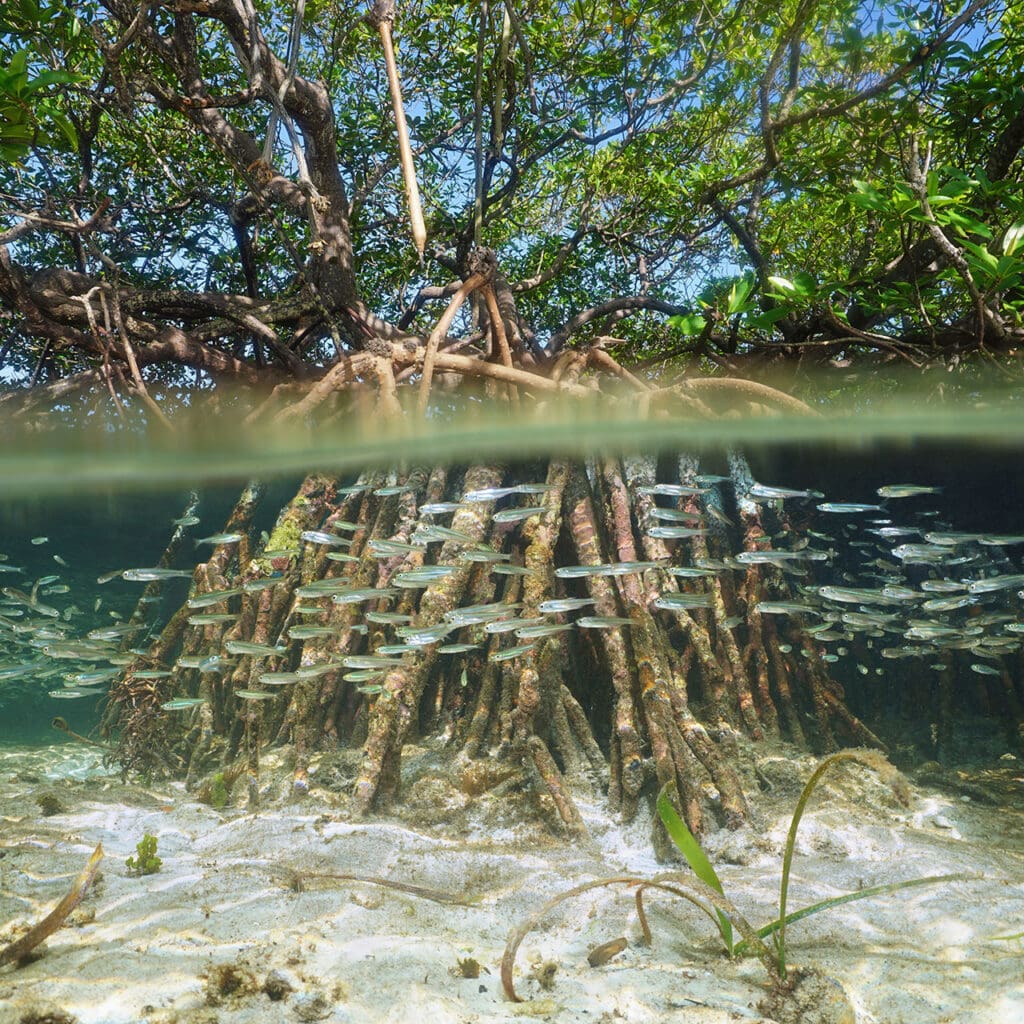As divers, we often get on boats in marinas that are sheltered by mangrove forests and then ride right past them without realizing how critical these areas are. Mangrove forests are the unsung heroes of South Florida’s coastal ecosystems, playing a crucial role in maintaining the health of coral reefs, stabilizing shorelines, and supporting marine biodiversity. These salt-tolerant trees—red mangrove (Rhizophora mangle), black mangrove (Avicennia germinans), and white mangrove (Laguncularia racemosa)—form dense coastal forests that act as natural barriers against erosion, filter pollutants, and provide essential nursery habitats for countless marine species.
We were excited to meet Joseph Land, founder and president of CoastLove this past weekend, and hear about all of the work his organization is doing. Among other things, they are planting a red mangrove nursery in the Keys with over 6,000 seedlings planted so far. The habitat CoastLove is making will ensure scuba divers get to enjoy the reefs of the Florida Keys for many years to come.
Because Conservation is a core component of Out Scuba’s 3-part mission, we wanted to take a moment and dig into just how important these species are to the reefs that we love so much.
Why Mangroves Matter to Coral Reefs
Mangroves and coral reefs share a symbiotic relationship. The intricate root systems of mangroves trap sediments and pollutants, preventing them from smothering nearby reefs. They also serve as nurseries for juvenile fish, including species that later migrate to reefs, ensuring a thriving marine ecosystem. Without healthy mangrove forests, reefs suffer from increased sedimentation, reduced fish populations, and heightened vulnerability to climate change.
How People Can Help
Protecting mangroves starts with awareness and action. Here’s how you can contribute:
- Support Conservation Efforts: Organizations like CoastLove working to restore mangrove habitats need volunteers and funding. Get involved with CoastLove today.
- Avoid Mangrove Destruction: Coastal development often leads to mangrove loss. Advocate for responsible land use policies.
- Participate in Cleanups: Mangroves trap debris, which can harm wildlife. Regular cleanups help maintain their health.
- Plant Mangroves: Restoration projects often involve planting mangrove seedlings in degraded areas.
Mangrove Habitats in Broward County
Broward County is home to some impressive mangrove forests, particularly in West Lake Park, which boasts over 1,500 acres of coastal wetlands. The Anne Kolb Nature Center in Hollywood also offers boardwalks through thriving mangrove ecosystems. However, urbanization and coastal development have led to significant mangrove loss, particularly around Port Everglades, where dredging and filling have altered natural habitats.
Mangrove Species in South Florida and Broward County
South Florida hosts three primary mangrove species:
- Red Mangrove (Rhizophora mangle): Recognizable by its tangled prop roots, often called “walking trees.”
- Black Mangrove (Avicennia germinans): Features upward-growing pneumatophores that help with oxygen exchange.
- White Mangrove (Laguncularia racemosa): Found at higher elevations, with distinctive salt glands at the base of its leaves
These species are present in Broward County, contributing to the region’s coastal resilience.
Legal Protections for Mangroves
Mangroves in Florida are protected under the Mangrove Trimming and Preservation Act (1996), which regulates their alteration and removal. Homeowners must follow strict guidelines when trimming mangroves, and unauthorized destruction can result in hefty fines. Conservation efforts continue to ensure these vital ecosystems remain intact for future generations.
Mangroves are more than just coastal trees—they are lifelines for marine ecosystems, guardians of coral reefs, and natural protectors against climate change. By understanding their importance and taking action, we can help preserve South Florida’s coastal beauty for years to come.

